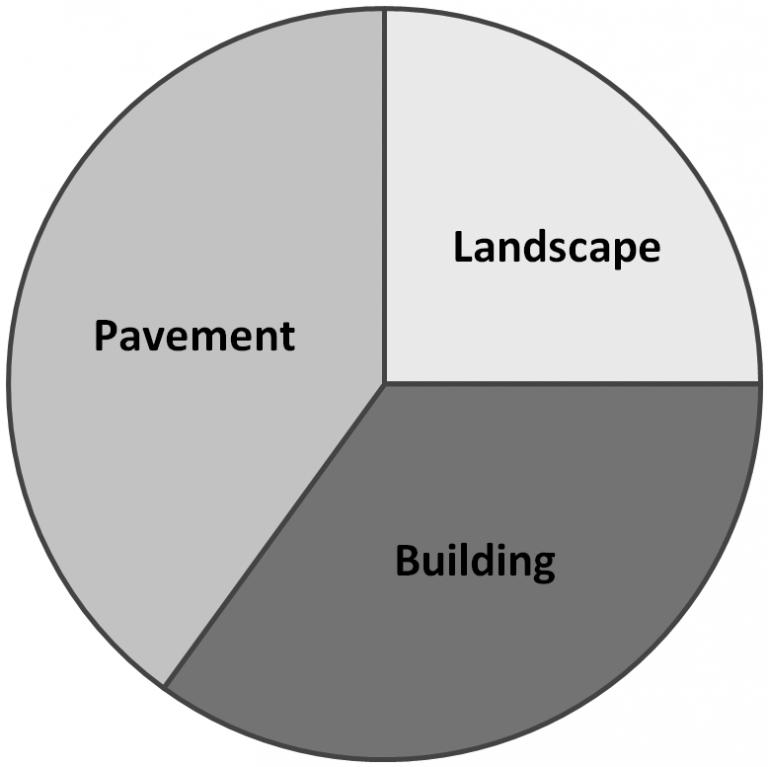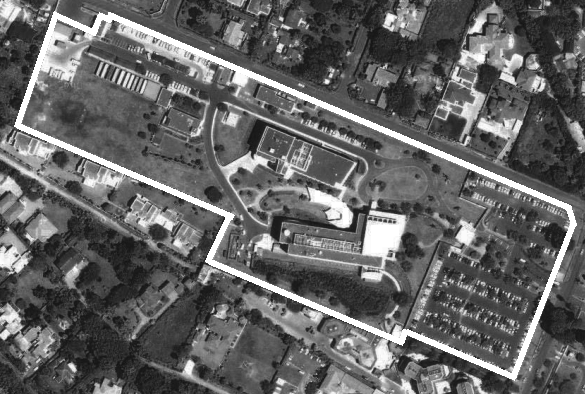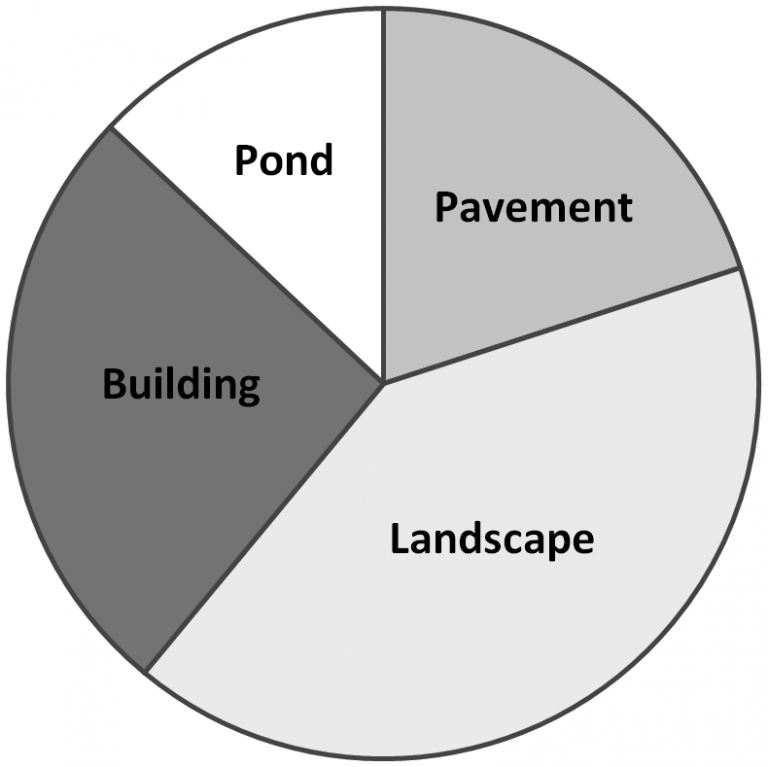Profile
Sites may be composed of many elements, including buildings, landscaping, stormwater management infrastructure, parking, roadways, patios, and sidewalks. Site configuration varies dramatically from place to place, as illustrated by the comparison of two U.S. Embassy posts in Figure 2. Variations in proportions of site elements, total land area, permeability of surfaces, and types of materials result in significantly different maintenance and operational needs. Therefore, the existing site composition is a significant driver of an appropriate site management solution.
Figure 2: Aerial views of U.S. Embassy Berlin (top) and U.S. Embassy Nairobi (bottom)




For example, compact sites with high proportions of built and impervious surface coverage, including U.S. Embassy Berlin, may be best served by structural solutions, such as green roofs or pervious pavement. Sites with expansive landscaping, similar to U.S. Embassy Nairobi, are prime candidates for low-impact development strategies that use ecological processes, such as bioswales and constructed wetlands, to minimize impact on the surrounding area and reduce resource demand.
The site facilities team should conduct audits to understand existing site composition, conditions, and maintenance practices. After assessing sites, the most effective sequence for pursuing site performance improvement is as follows:
- Reduce Loads: Non-native plantings, lawn areas, and extensive areas of hardscape can unnecessarily increase site water loads, thereby requiring increased stormwater management. Establish xeriscaping strategies and reduce hardscape areas to decrease both irrigation demands (see Water: Irrigation) and runoff.
- Choose lower-impact alternatives: IPM, green exterior maintenance and cleaning, and sustainable landscaping practices include low-impact techniques that require less water, fuel, and time to implement than conventional, unsustainable practices. Identify strategies to reduce site runoff through stormwater detention techniques. Additionally, low-impact site strategies can improve air and water quality of surrounding areas.
- Consider on-site treatment: Sites can reduce the burden on their local municipal water treatment and conveyance systems through rainwater collection from roofs, retention in cisterns or tanks, green roofs, treatment for reuse, and discharge into groundwater tables. These techniques can minimize or even eliminate the need to connect to municipal water or rely on well water systems. These strategies can also reduce negative impacts from stormwater runoff.

